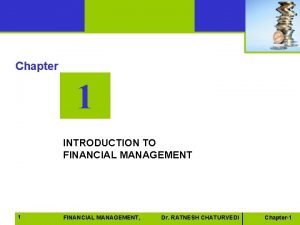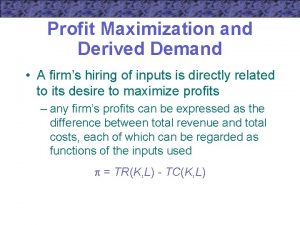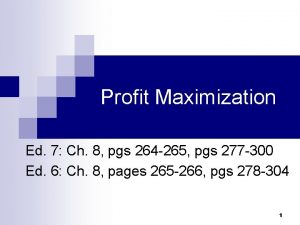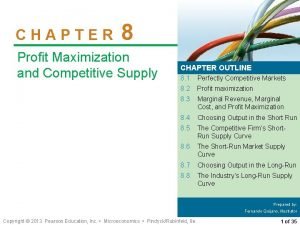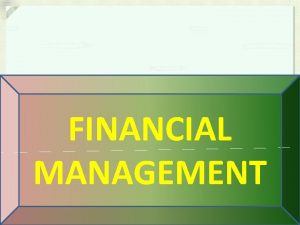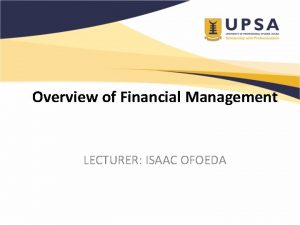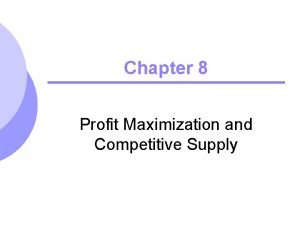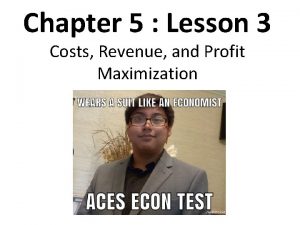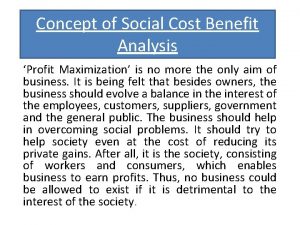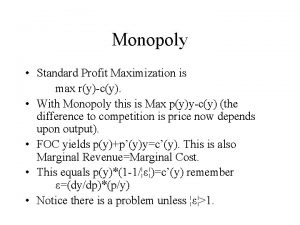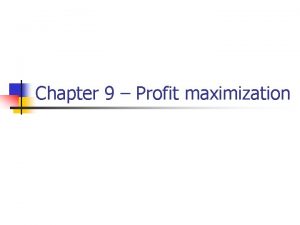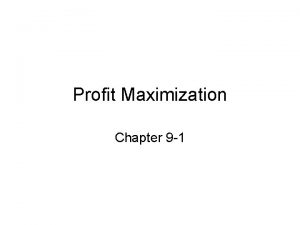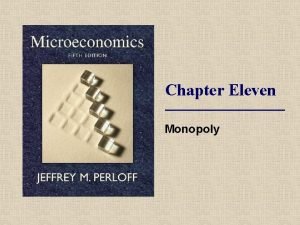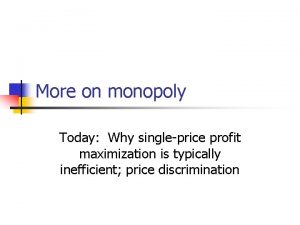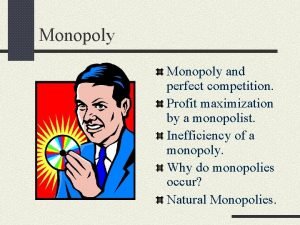Monopoly Standard Profit Maximization is max rycy With








- Slides: 8

Monopoly • Standard Profit Maximization is max r(y)-c(y). • With Monopoly this is Max p(y)y-c(y) (the difference to competition is price now depends upon output). • FOC yields p(y)+p’(y)y=c’(y). This is also Marginal Revenue=Marginal Cost.

Example • Price is p(y)=120 -2 y, this implies marginal revenue is ------. • Total cost is c(y)=y 2. This implies marginal cost is ----. • What is the monopoly’s choice of y (mr=mc) and profits? • What is the competitive equilibrium y (price=mc) and firms profits? • Why is a monopoly inefficient? Someone values a good above its marginal cost. • In a diagram, what is the welfare loss?

Rule of thumb prices • Many shops use a rule of thumb to determine prices. • Clothing stores may set price double their costs. • Restaurants set menu prices roughly 4 times costs. • Can this ever be optimal? • If q=Apє, what is price if marginal cost is constant?

Why Monopolies? • What causes monopolies? – a legal fiat; e. g. US Postal Service – a patent; e. g. a new drug – sole ownership of a resource; e. g. a toll highway – formation of a cartel/collusion; e. g. OPEC – large economies of scale; e. g. local utility companies: “Natural Monopoly”. Such as when at competitive price is below average cost. (I like two firms cannot make a profit no matter what price is set, but one firm can. )

Patents • A patent is a monopoly right granted to an inventor. It lasts about 17 years. • For the government: there is a trade-off between – loss due to monopoly rights. – incentive to innovate. • For the company – Must decide between patent and trade secret. – Minus side of patent is that it expires and is no longer secret (competitors can perhaps go around it). – Minus side of trade secret is that there is no legal protection, but lasts forever. For example, Coca Cola. – Strategy – protective, delay or shelve? License (temporarily remove competition).

24. 06 Natural Monopoly where a firm cannot make a profit with competitive pricing.

Natural Monopoly • • Take C(y)=1+y 2. P(y)=3 -y. Notice the c entails a fixed cost of 1. Where does p=mc (mc is 2 y)? What is profits at this point for a single firm that meets the whole demand? What happens when another firm enters? They can’t charge a price close to competitive equilibrium and survive. Monopoly (mr=3 -2 y)? Y=3/4. If two firms try to split this output, they still lose money. (Actually, two firms that split output can do better than this by setting Y=1. Why? ) Do they still lose money? Government should allow a monopoly but force a price cap. What should happen if C(y)=1. 1+y 2? C(y)=1. 6+y 2? The last has demand below average cost.

Taxes • What happens to the monopoly’s choice under a profit tax? • What happens under a quantity tax? – This shifts up the supply/marginal cost curve. – The monopolist chooses where MR=MC so the quantity is reduced. – Consequently, welfare is lower.
